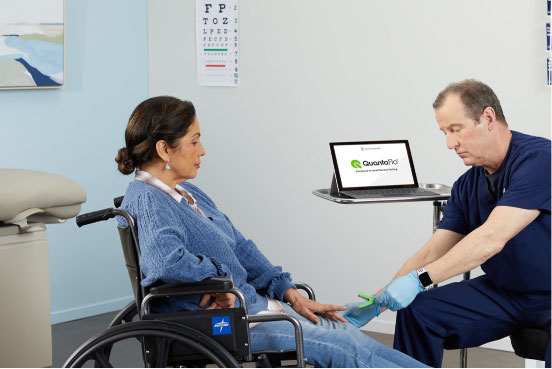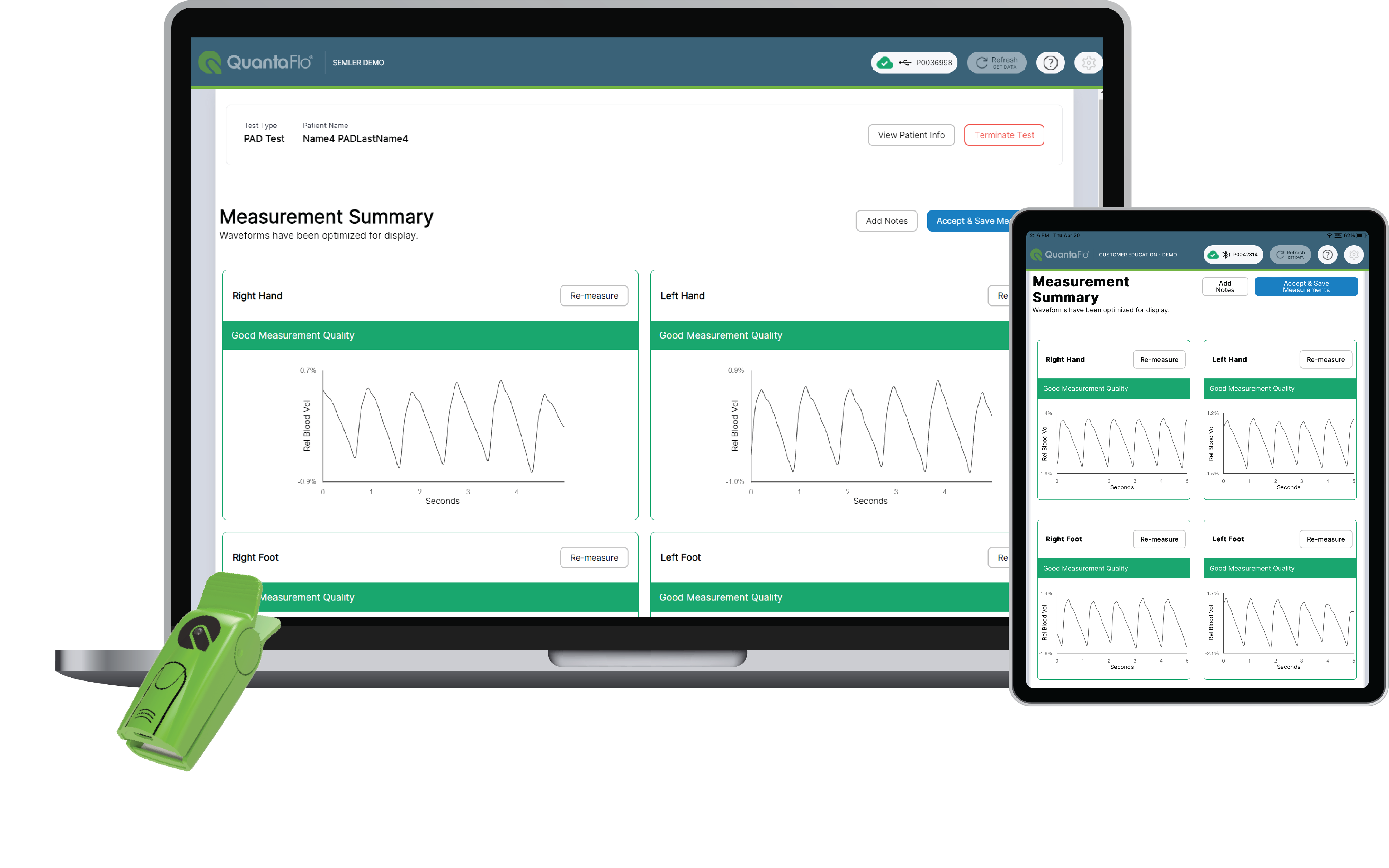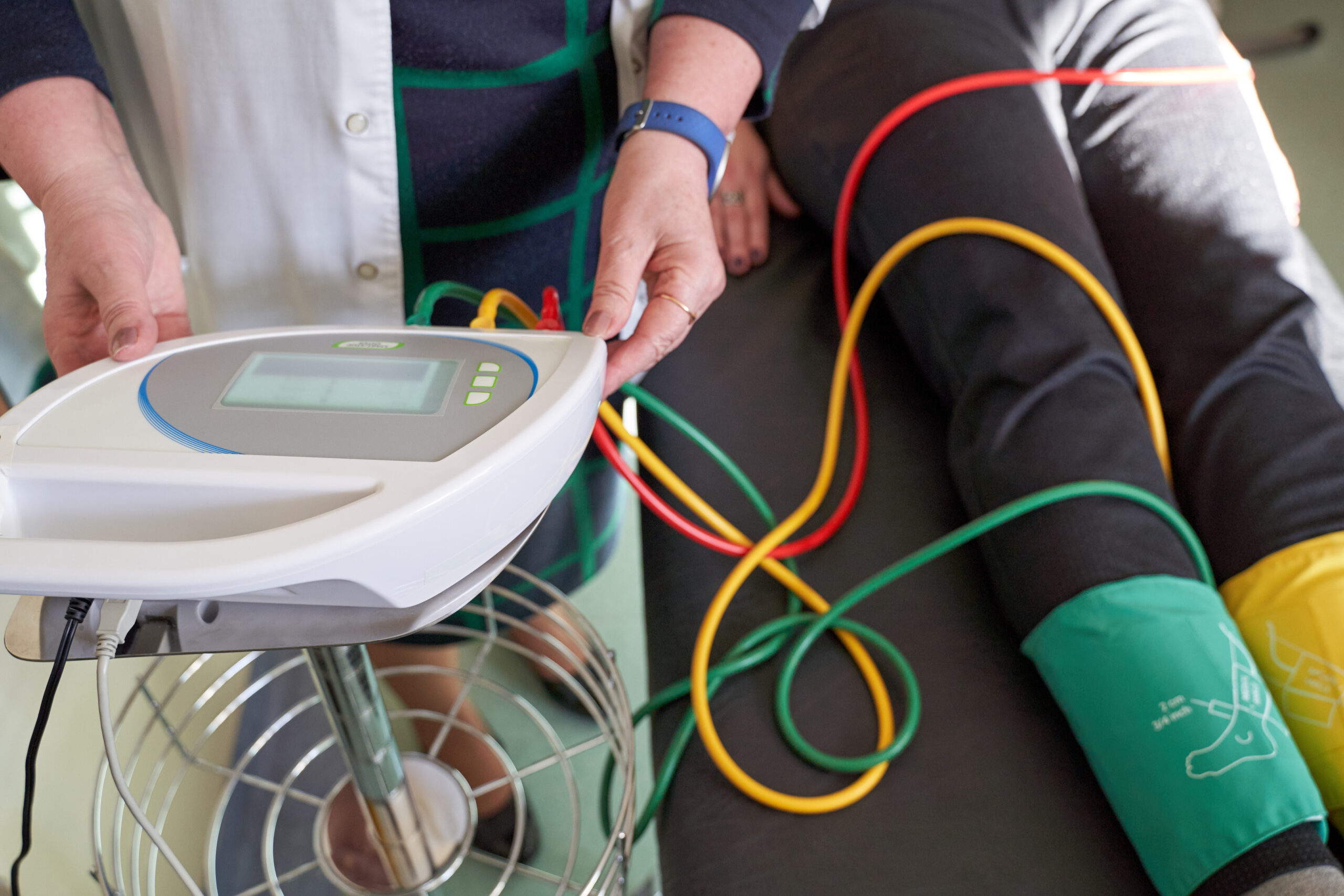QuantaFlo PAD Testing
QuantaFlo® is our flagship solution that allows providers to test for early signs of Peripheral Arterial Disease (PAD) in clinical or home settings in a matter of minutes using any compatible device.


Peripheral Arterial Disease Testing at the Point of Care
QuantaFlo PAD gives providers the opportunity to improve patient outcomes and lower operating costs by providing fast, accurate test results for peripheral arterial disease directly at the point of care in less than 3 minutes.
QuantaFlo PAD runs on Windows, Android, and iOS for tablets and mobile, and can be integrated with enterprise-level data management systems (EMRs). Combined with the high portability of our solution, this means less time in front of a device, and more time spent caring for patients

How does QuantaFlo PAD work?
When blood flow is obstructed, turbulent fluctuations occur in blood volume in the extremities. QuantaFlo PAD uses an infrared sensor to measure these fluctuations in both early and later stages of PAD, including in patients with calcified vessels.
A Solution for Early Detection

When paired with one of our sensors, our QuantaFlo PAD test analyzes patient arterial blood flow using volume plethysmography. Waveforms are presented visually for users as sensors are connected to patient digits.
On-screen instructions guide users easily through the PAD testing process, and analysis from the application will notify users of any adjustments required to achieve the optimal signal quality.
Results with actionable insights are available in under 3 minutes.


QuantaFlo PAD Advantages
Contact us today to learn more about QuantaFlo PAD
How is QuantaFlo different from ABI?
ABI measurement uses a cuff-based system to measure arterial pressure in the arms and at two locations in the ankle. These pressure values are used to calculate the ABI ratio.
While ABI is able to sufficiently detect advanced PAD, it typically is unable to detect PAD at pre-clinical disease levels and in patients with calcified vessels.


Is there a correlation between QuantaFlo PAD and ABI values?
QuantaFlo accuracy has shown to be higher than cuff-based ABI when evaluated by ultrasound or angiography.
Generally, QuantaFlo can detect even the earliest blood flow volume changes and is less affected by calcified vessels as seen with the limitations of cuff-based ABI testing method.
Does a positive QuantaFlo PAD result require confirmation by ABI?
No! QuantaFlo PAD is a stand-alone test that supports clinicians in the early diagnosis of PAD and does NOT require confirmation by cuff-based ABI.
For patients presenting with symptoms and/or with severe disease, providers may opt to order a duplex ultrasound to identify specific location(s) and severity of any plaque lesions to determine a treatment plan.

Have more questions about QuantaFlo PAD?
Testimonial
Dr. Long is a retired vascular surgeon and serves as Semler Scientific’s in-house medical director.
His wealth of knowledge and experience have helped guide the development of our QuantaFlo solution into what it is today.

View Dr. Long Testimonial

